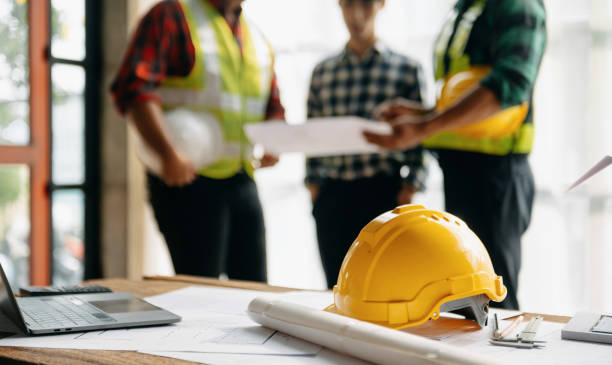Innovative Materials Transforming Construction Today
작성자 정보
- Britney 작성
- 작성일
본문
The use of such technologies not only extends the lifespan of infrastructure but also improves occupant comfort. Self-healing concrete, for example, can repair its own cracks, reducing costly maintenance. This advancement marks a pivotal shift in construction, where materials no longer remain static but actively contribute to performance and environmental balance. Phase-changing materials help regulate indoor temperatures, cutting energy use. Smart materials are reshaping construction by enhancing building intelligence and efficiency. These materials respond to external factors like temperature, light, and pressure, allowing structures to adapt to environmental changes automatically. Engineers and designers are increasingly integrating smart materials into both residential and commercial projects, ensuring that future buildings are not only stronger but also more sustainable.
3D printing technology is revolutionizing the construction landscape by enabling faster, more precise, and cost-effective building methods. Using advanced printing systems, entire walls, foundations, and even complete homes can be created layer by layer with minimal material waste. The integration of sustainable printing materials such as recycled concrete or bioplastics further enhances environmental benefits. This approach allows for complex designs and customization that traditional techniques cannot easily achieve. As this technology continues to mature, it is transforming the construction industry into a model of innovation, efficiency, and sustainability—proving that the future of building is both smarter and greener. Additionally, 3D printing reduces labor requirements and accelerates project timelines, making it a game-changer for housing and infrastructure development.
The evolution of innovative materials is reshaping the future of construction, making buildings smarter, greener, and more resilient. Call us today at (402) 426-0260 to discuss your next building project and psc constructionhttps://x.com/psc_construct experience craftsmanship built to last. Our team in Blair, NE, delivers excellence in every project—whether it’s new construction or renovation. As technology and sustainability converge, the demand for advanced building solutions continues to grow. For reliable and professional construction services that prioritize innovation and quality, trust PSC Construction, Inc.
 These advancements reduce maintenance costs and enhance the overall sustainability of infrastructure. Self-healing concrete infused with bacteria can seal small cracks automatically when moisture enters, prolonging the structure’s life. Moreover, carbon-sequestering concrete helps trap CO₂ emissions, contributing to a cleaner atmosphere. The construction industry now benefits from materials that are not only stronger but also environmentally conscious and long-lasting. Ultra-high-performance concrete (UHPC) delivers exceptional strength and resistance to harsh environmental conditions, making it ideal for bridges and skyscrapers. The combination of technology and chemistry is revolutionizing traditional concrete applications, allowing engineers to push the limits of design and durability. Concrete remains a foundational material in construction, but modern innovations have made it smarter and more resilient.
These advancements reduce maintenance costs and enhance the overall sustainability of infrastructure. Self-healing concrete infused with bacteria can seal small cracks automatically when moisture enters, prolonging the structure’s life. Moreover, carbon-sequestering concrete helps trap CO₂ emissions, contributing to a cleaner atmosphere. The construction industry now benefits from materials that are not only stronger but also environmentally conscious and long-lasting. Ultra-high-performance concrete (UHPC) delivers exceptional strength and resistance to harsh environmental conditions, making it ideal for bridges and skyscrapers. The combination of technology and chemistry is revolutionizing traditional concrete applications, allowing engineers to push the limits of design and durability. Concrete remains a foundational material in construction, but modern innovations have made it smarter and more resilient.관련자료
-
이전
-
다음
댓글 0
등록된 댓글이 없습니다.
